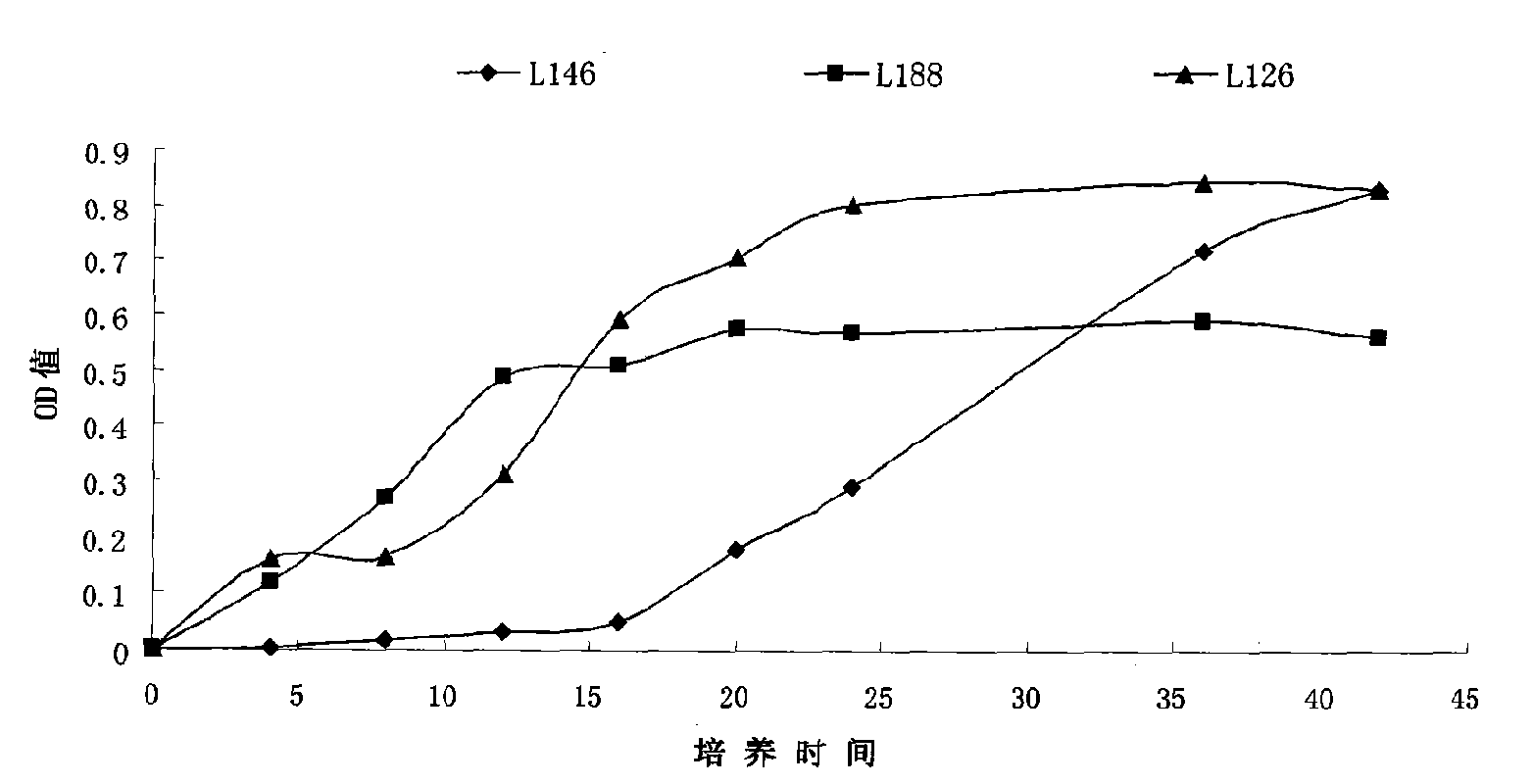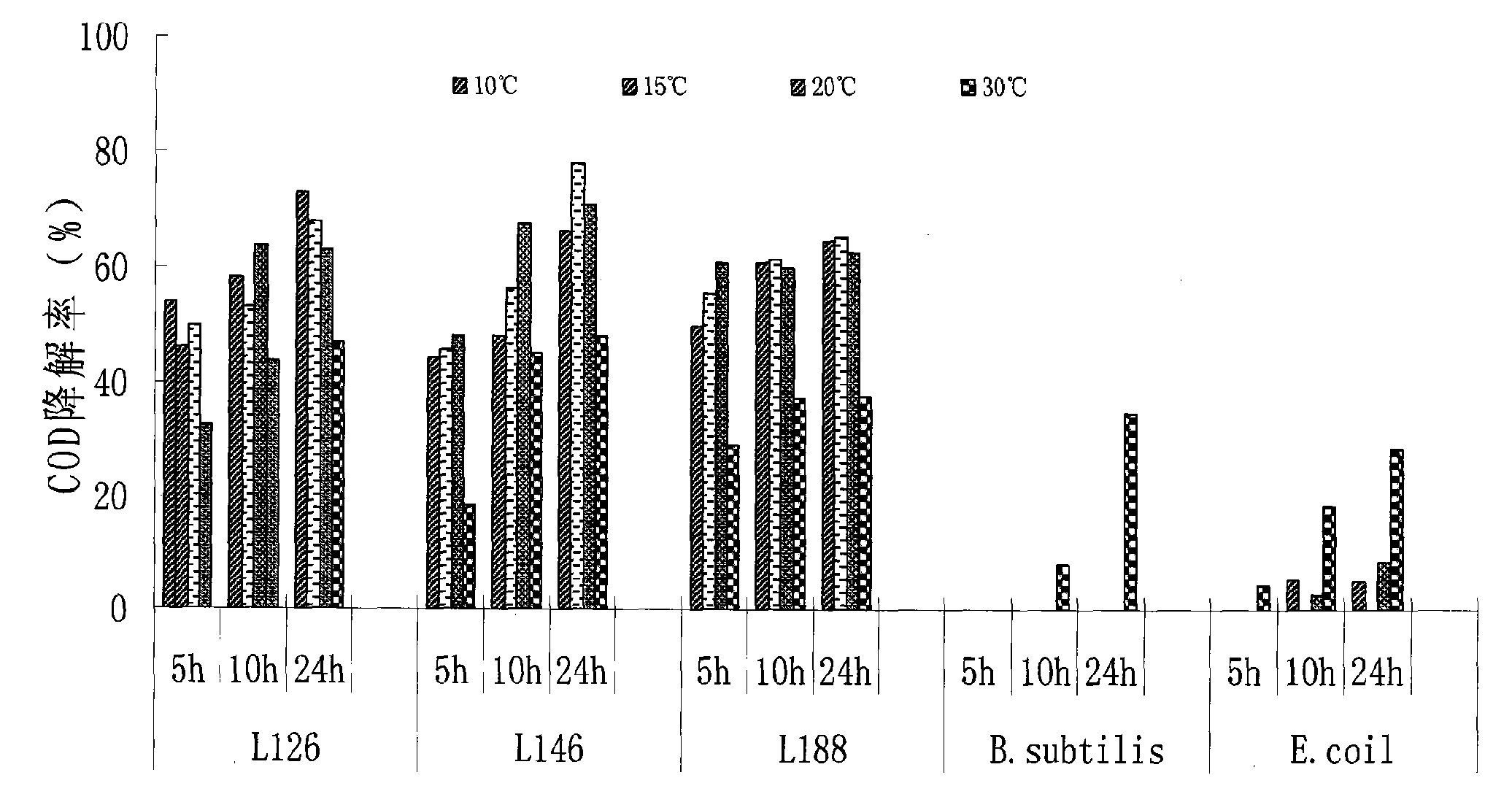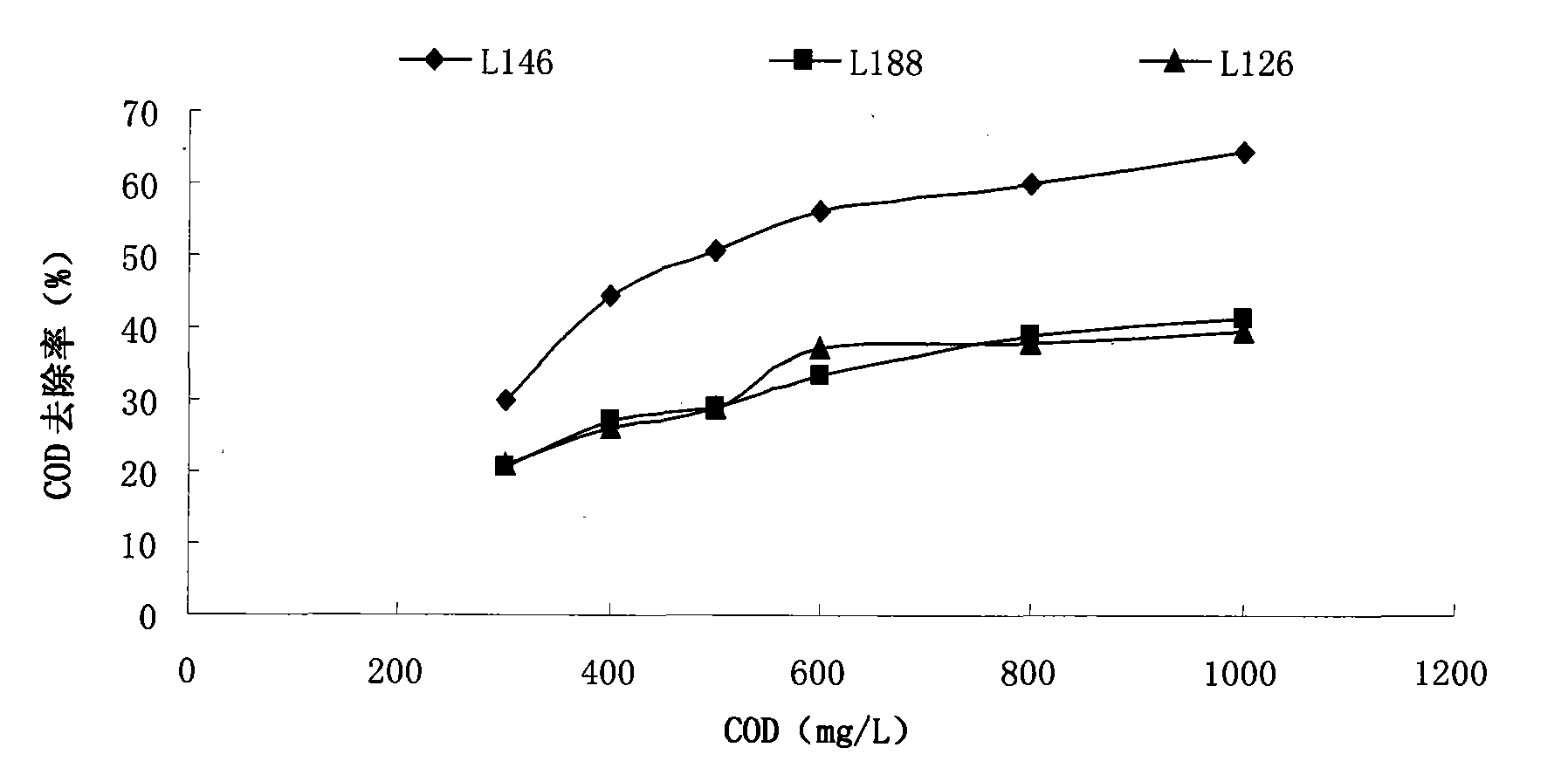Psychrotrophs and application thereof in wastewater treatment
A technology for sewage treatment and biological treatment of sewage, which is applied in the fields of low-temperature-resistant mixed bacteria, sewage biological treatment, bacterial flora, and sewage treatment. Problems such as decline in ability
- Summary
- Abstract
- Description
- Claims
- Application Information
AI Technical Summary
Problems solved by technology
Method used
Image
Examples
Embodiment 1
[0021] Example 1: Screening and Identification of Bacterial Strains
[0022] Of the three strains provided by the present invention, L126 is named Janthinobacterium lividum, L146 is named Flavobacterium hercynium, and L188 is named Pseudomonas gessardii. At present, the three strains have been deposited in the International Depository of Microorganisms of the Budapest Treaty: China Microorganism Culture Preservation Management Committee on General Microbiology Center (CGMCC). Address: Institute of Microbiology, Chinese Academy of Sciences, Datun Road, Chaoyang District, Beijing, Zip code: 100101, date of deposit is March 18, 2009, and deposit numbers are CGMCC No 2956, CGMCC No 2957, and CGMCC No 2958.
[0023] Pyrotrophic bacteria L126, aerobic, Gram-negative, rod-shaped without spores, motile; the colony is white in the early stage, and turns purple in the later stage, with smooth, moist, round, and neat edges; growth temperature 4-35°C, 37°C No growth, the optimum growth t...
Embodiment 2
[0027] Embodiment two: the mensuration of growth curve of psychrotroph L126, L146, L188
[0028] Inoculate three strains of psychrotrophic bacteria L126, L146, and L188 in 5ml of complete liquid medium respectively, and culture them at 10°C and 180rpm for 24 hours, then inoculate 0.1ml of the bacterial suspension into 25ml of fresh complete liquid medium, under the same conditions Under culture, samples were taken at regular intervals to measure the absorbance value (OD) of the bacteria. 600 ), draw the growth curve, the results are shown in the attached figure 1 shown.
[0029] The results showed that the three strains could grow well under the low temperature condition of 10℃, but their growth rates were different; L188 had reached the maximum growth at 20 hours, while L146 grew slowly and had not reached the maximum growth at 42 hours. In mixed culture, different bacteria can play a role in different time periods.
Embodiment 3
[0030] Embodiment three: the influence of temperature on bacterial strain treatment effect
[0031] Inoculate three strains of psychrotrophic bacteria L126, L146, L188 and mesophilic strains Escherichia coli (E.coli) and Bacillus subtilis (S.subtilis) in complete liquid medium, place them at their respective optimum culture temperatures, and cultivate them at 180rpm After 20-24 hours, inoculate in simulated domestic sewage with 10% inoculum amount, incubate with 180rpm aeration, and measure the COD value change of simulated domestic sewage within 24 hours at 10°C, 15°C, 20°C, and 30°C respectively. The measurement results can be found in the appendix figure 2 shown.
[0032] The results showed that, compared with mesophilic bacteria Escherichia coli (E.coli) and Bacillus subtilis (S.subtilis), the degradation efficiency of psychrotrophic bacteria L126, L146 and L188 was significantly higher than that of mesophilic bacteria at low temperature; L126 and L146 , L188 strain has...
PUM
 Login to View More
Login to View More Abstract
Description
Claims
Application Information
 Login to View More
Login to View More - R&D
- Intellectual Property
- Life Sciences
- Materials
- Tech Scout
- Unparalleled Data Quality
- Higher Quality Content
- 60% Fewer Hallucinations
Browse by: Latest US Patents, China's latest patents, Technical Efficacy Thesaurus, Application Domain, Technology Topic, Popular Technical Reports.
© 2025 PatSnap. All rights reserved.Legal|Privacy policy|Modern Slavery Act Transparency Statement|Sitemap|About US| Contact US: help@patsnap.com



